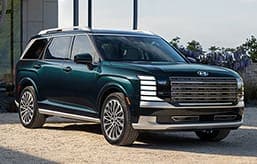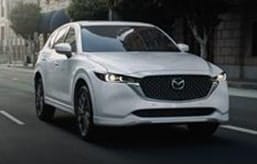- GM is now listing OnStar as an option for many of these new vehicles.
- However, OnStar is now a required $1,500 option, and it can't be removed from a car.
- Chevrolet vehicles could be included too.
GM Is Being Deceptive About the Prices of Its Cars
Certain GMC, Buick and Cadillac models are more expensive than advertised
A few weeks ago, General Motors quietly added a price hike on a number of GMC and Buick models, but in a way that allows the automaker to claim the price of the vehicle is lower than it actually is. This isn't a case of dealer markups — that's a separate issue, as those are set at the dealer level — or even a year-over-year price increase necessitated by the rising costs of production (as has been cited by other manufacturers to justify higher MSRPs). Rather, this is GM breaking up a previously standard feature, then adding it back in as a costly "option" that cannot be removed.
What's the upside for GM? It allows it to advertise its vehicles at a lower price than what it ultimately charges the customer. And it's not the first time that General Motors has played pricing games with shoppers.
GM introduces sneaky price increase
On August 9, the Detroit Free Press noted that OnStar — a previously standard package on all new GM vehicles that came with a three-month trial of the base-level Connected Services suite — is now optional for most new GMC and Buick vehicles, along with the Cadillac Escalade. The story notes that Chevrolet is currently finalizing plans to implement this change in its lineup as well.
However, the OnStar system isn't truly optional. New GMC, Buick and Escalade vehicles (and presumably future Cadillac and Chevrolet models) have OnStar listed as a $1,500 line item that cannot be removed. That means shoppers have no choice in the matter. Each one of the aforementioned vehicles is loaded with OnStar from the factory — despite being advertised as an option — and customers will have to pay the upcharge whether they ever activate or use the OnStar system.
You can see the changes yourself by using the brand's website configurators and comparing a vehicle built for the 2022 model year to one built for 2023.
Vehicle production has been volatile over the past couple years, from manufacturing shutdowns to the persistent microchip shortage. On some vehicles, we've seen automakers make multiple price increases per model year or remove certain features. But this is the first time we can remember an automaker mandating an option and advertising a price that is simply untrue.
What you're getting for your $1,500 OnStar required option
OnStar is a subscription-based telematics service that began appearing in a number of Cadillac models starting in model year 1997. It's since evolved from a simple emergency notification and security system and it now provides a multitude of features, such as vehicle diagnostic checks, vehicle locating, and the ability to send commands to your vehicle via Amazon Alexa.
This new OnStar scheme does include a three-year subscription to the ultimate Premium tier, which includes all of OnStar's services and is typically priced at $49.99/month. So you are getting something. But our issue is that buyers who don't need or want OnStar's full list of services are stuck paying for them anyway.
We've seen deceptive pricing from GM before
Let us tell you a tale of General Motors' entry-level L and SLE trims. For years, budget-friendly GM models (think the Chevrolet Cruze or GMC Terrain) carried a base price that more or less lined up with those of their competitors.
Take the 2018 Chevrolet Traverse, for instance. The MSRP for its introductory L trim was priced from $30,875, including destination charges. On the surface, that made the Traverse an attractive choice for price-sensitive shoppers who were also considering the entry-level Honda Pilot LX ($31,875) or base Ford Explorer ($33,135). The Traverse was also loaded with tech features, including a touchscreen and Apple CarPlay and Android Auto smartphone compatibility — none of which came standard on the Pilot or Explorer.
However, there was something funny with the Traverse's trim lineup. The next-level LS tacked on an extra $2,120 to the sticker, but the only item added was tinted windows. A closer look at the order guide reveals what was going on. The Traverse L was a special retail order-only model, which meant you had to go into the dealer, specifically order the L (which was only available in white and didn't give buyers the ability to specify any options, accessories or even all-wheel drive) and then wait for their car to be built and shipped. Shoppers who had seen the advertised $30,875 starting price and expected to find one on a dealer lot were greeted instead with LS models starting from $32,995.
That's still less than a Pilot or Explorer with a touchscreen and smartphone compatibility — though more expensive than an Android Auto/Apple CarPlay-equipped Hyundai Santa Fe at $31,800 — but it wasn't as cheap as a Chevrolet shopper would expect. Meanwhile, though entry-level Pilots, Explorers and Santa Fes were tougher to find than higher-spec models, shoppers could still grab one right off the dealer lot. No hidden hoops to jump through.
This pricing game was common for GM vehicles in the mid-to-late 2010s. The special order-only 2016 Cruze L started at $17,495, while the next-level LS ($18,995) that you could actually find at a dealership added just a center armrest and floor mats. The 2018 GMC Acadia SL carried an MSRP of $29,995 (it was advertised on GMC's site as starting at $29,000, not including the destination fee), but it, too, was a special-order vehicle. The more common SLE-1 was priced from $33,555 and added only LED daytime running lights, satellite radio and rear floor mats. You could also get the SLE-1 in colors other than white or silver, add all-wheel drive, and select from a number of dealer-installed add-ons, but those were all extra.
Chevrolet and GMC dropped these special-order vehicles from their lineups for 2022, but the prices for some vehicles have changed dramatically through this model year. The 2022 Tahoe LS, for instance, initially started at $51,395 but later increased to $53,795 (note that this price does not reflect the current $50 credit due to the Tahoe not having front and rear parking sensors). Its GMC Yukon twin has suffered a similar fate, starting at $53,295 at the beginning of the 2022 model year before rising to its current starting price of $55,795. Err, make that $57,245 (plus $1,500 for the OnStar package, minus $50 for the lack of a steering column lock).
Edmunds says
For over half a decade, GM played pricing games by advertising affordable models that were difficult, though not impossible, to obtain. We thought that stopped when those models were dropped in 2022, but the recent OnStar news seems like more of the same.





 by
by